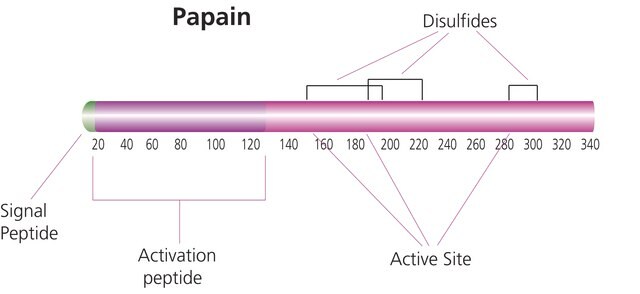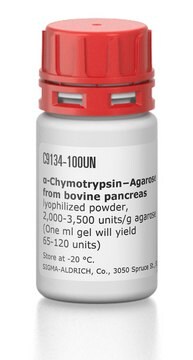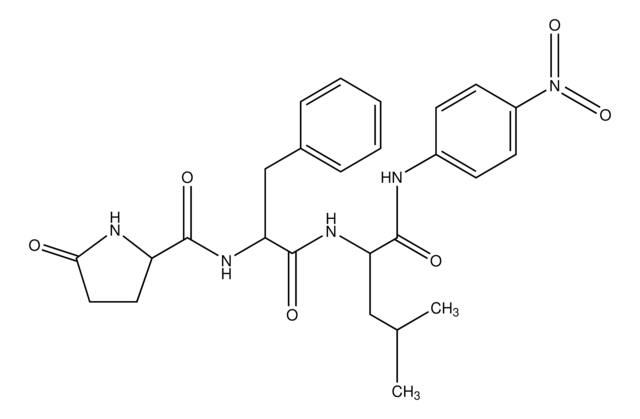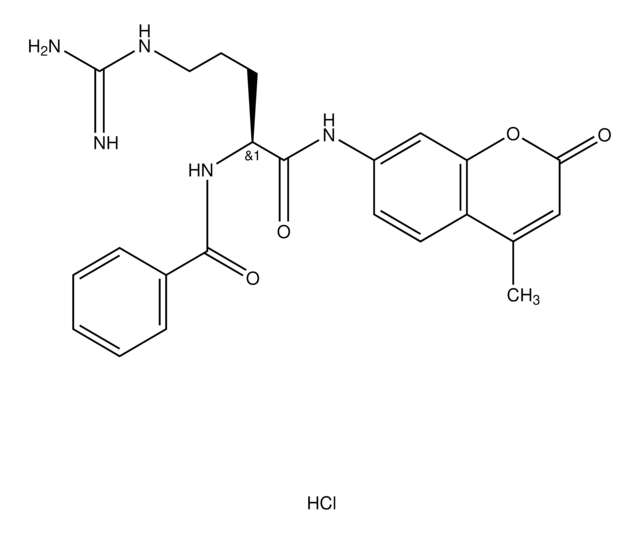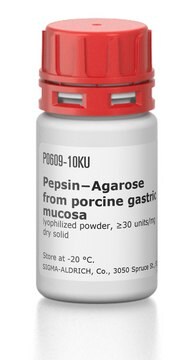P4406
Papain Agarose from papaya latex
lyophilized powder, 90-150 units/mL packed gel
About This Item
Recommended Products
biological source
papaya (latex)
Quality Level
form
lyophilized powder
specific activity
90-150 units/mL packed gel
mol wt
21 kDa
extent of labeling
3,000-5,000 units per g agarose (at pH7.0 at 30 °C.)
matrix
beaded agarose
storage temp.
−20°C
Application
Biochem/physiol Actions
. The pH optimum is 6.0-7.0
. Papain hydrolyzes esters and amides. Papain consists of a single polypeptide chain with three disulfide bridges and a sulfhydryl group necessary for activity of the enzyme.
Also hydrolyzes esters and amides.
Unit Definition
Physical form
inhibitor
substrate
Signal Word
Danger
Hazard Statements
Precautionary Statements
Hazard Classifications
Resp. Sens. 1 - Skin Sens. 1
Storage Class Code
11 - Combustible Solids
WGK
WGK 3
Flash Point(F)
Not applicable
Flash Point(C)
Not applicable
Personal Protective Equipment
Certificates of Analysis (COA)
Search for Certificates of Analysis (COA) by entering the products Lot/Batch Number. Lot and Batch Numbers can be found on a product’s label following the words ‘Lot’ or ‘Batch’.
Already Own This Product?
Find documentation for the products that you have recently purchased in the Document Library.
Customers Also Viewed
Articles
Papain is a cysteine protease of the peptidase C1 family. Papain consists of a single polypeptide chain with three disulfide bridges and a sulfhydryl group necessary for activity of the enzyme.
Our team of scientists has experience in all areas of research including Life Science, Material Science, Chemical Synthesis, Chromatography, Analytical and many others.
Contact Technical Service